Episodes
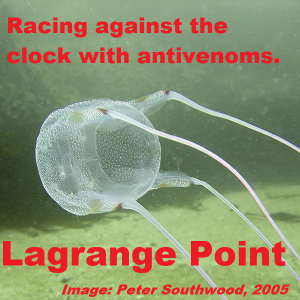
Monday May 06, 2019
Episode 325 - Racing against time, from Box Jellyfish to Alzheimers
Monday May 06, 2019
Monday May 06, 2019
Medicine is often a race against time, to diagnose, to develop and to treat. This week we're looking at new research which speeds up the detection of Alzheimers in patients and provides a chance to test out potential treatments. We also find out how University of Sydney researchers may help deliver a quick antivenom to those stung by the deadly box jellyfish. Plus ways to turn leftover bits of junk in blood plasma, into useful diagnosis tools that may help save time and lives in treatment without wasting more time on tests.
References:
- Man-Tat Lau, John Manion, Jamie B. Littleboy, Lisa Oyston, Thang M. Khuong, Qiao-Ping Wang, David T. Nguyen, Daniel Hesselson, Jamie E. Seymour, G. Gregory Neely. Molecular dissection of box jellyfish venom cytotoxicity highlights an effective venom antidote. Nature Communications, 2019; 10 (1) DOI: 10.1038/s41467-019-09681-1
- Maria D Giraldez, Ryan M Spengler, Alton Etheridge, Annika J Goicochea, Missy Tuck, Sung Won Choi, David J Galas, Muneesh Tewari. Phospho-RNA-seq: a modified small RNA-seq method that reveals circulating mRNA and lncRNA fragments as potential biomarkers in human plasma. EMBO Journal, 2019 DOI: 10.15252/embj.2019101695
- Andreas Nabers, Henning Hafermann, Jens Wiltfang, Klaus Gerwert. Aβ and tau structure-based biomarkers for a blood- and CSF-based two-step recruitment strategy to identify patients with dementia due to Alzheimer's disease. Alzheimer's & Dementia: Diagnosis, Assessment & Disease Monitoring, 2019; 11: 257 DOI: 10.1016/j.dadm.2019.01.008
Medicine is often a race against time, to diagnose, to develop and to treat. This week it's stories of scientists and doctors racing against the clock.
New research which speeds up the detection of Alzheimer's in patients and provides a chance to test out potential treatments.
We find out how University of Sydney researchers may help deliver a quick antivenom to those stung by the deadly box jellyfish.
Plus ways to turn leftover bits of junk in blood plasma, into useful diagnosis tools that may help save time and lives in treatment without wasting more time on tests.
There are whole bundles of random RNA fragments in blood plasma, but these can be used to help diagnose specific issues.
The box jellyfish is just one of the many things in Australia that is trying to kill you, but now it's slightly less deadly thanks to University of Sydney researchers.
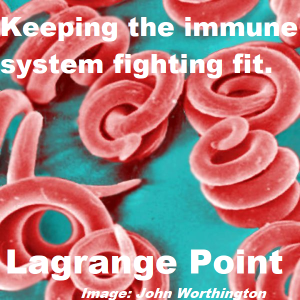
Monday Apr 22, 2019
Lagrange Point Episode 323 - Keeping your immune system in fighting shape
Monday Apr 22, 2019
Monday Apr 22, 2019
How can we keep our immune systems in fighting shape? What happens when our immune systems are responding well or are missing key genes? is there targeted gene therapies that can be used to help save lives of those most at risk from infection? How does our body hunt down and stop Listeria in it's tracks? Plus undercooked wild game or pork can lead to parasitic infections, but how does the body fight back?
References:
- E Mamcarz et al. Lentiviral gene therapy with low dose busulfan for infants with X-SCID. The New England Journal of Medicine, April 17, 2019; DOI: 10.1056/NEJMoa1815408
- Kazuhito Sai, Cameron Parsons, John S. House, Sophia Kathariou, Jun Ninomiya-Tsuji. Necroptosis mediators RIPK3 and MLKL suppress intracellular Listeria replication independently of host cell killing. The Journal of Cell Biology, 2019; jcb.201810014 DOI: 10.1083/jcb.201810014
- Nicola Steel, Aduragbemi A. Faniyi, Sayema Rahman, Stefanie Swietlik, Beata I. Czajkowska, Bethany T. Chan, Alexander Hardgrave, Anthony Steel, Tim D. Sparwasser, Mushref B. Assas, Richard K. Grencis, Mark A. Travis, John J. Worthington. TGFβ-activation by dendritic cells drives Th17 induction and intestinal contractility and augments the expulsion of the parasite Trichinella spiralis in mice. PLOS Pathogens, 2019; 15 (4): e1007657 DOI: 10.1371/journal.ppat.1007657
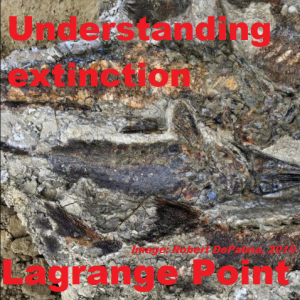
Monday Apr 01, 2019
Episode 320 - Extinction events and their causes
Monday Apr 01, 2019
Monday Apr 01, 2019
Life has been around on earth for a long time, but there have been many extinction events that have wiped out large numbers of species. This week we find out how scientists peel back the layers of rock to uncover what caused these extinction events. Plus we find out about current extinction events and what we can learn from the past to protect species today.
References:
- DePalma, Robert A.; Smit, Jan; Burnham, David; Kuiper, Klaudia; Manning, Phillip; Oleinik, Anton; Larson, Peter; Maurrasse, Florentin; Vellekoop, Johan; Richards, Mark A.; Gurche, Loren; Alvarez, Walter. Prelude to Extinction: a seismically induced onshore surge deposit at the KPg boundary, North Dakota. PNAS, 2019
- Ben C. Scheele et al. Amphibian fungal panzootic causes catastrophic and ongoing loss of biodiversity. Science, 2019 DOI: 10.1126/science.aav0379
- Seth A. Young, Andrew Kleinberg, Jeremy D. Owens. Geochemical evidence for expansion of marine euxinia during an early Silurian (Llandovery–Wenlock boundary) mass extinction. Earth and Planetary Science Letters, 2019; 513: 187 DOI: 10.1016/j.epsl.2019.02.023
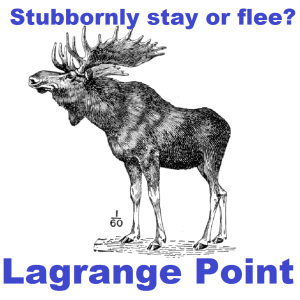
Monday Mar 18, 2019
Episode 318 - Stubborn Moose, repulsive smells and Otters with tools
Monday Mar 18, 2019
Monday Mar 18, 2019
We recap March Mamma Madness Round 1, and look at some latest science stories that relate. From what happens inside your brain when you smell a repulsive smell, to making the right call on fleeing or standing your ground. Plus we look at using archaeological techniques to help understand the history of animal tool use like with otters.
References:
- Ahmed A. M. Mohamed, Tom Retzke, Sudeshna Das Chakraborty, Benjamin Fabian, Bill S. Hansson, Markus Knaden, Silke Sachse. Odor mixtures of opposing valence unveil inter-glomerular crosstalk in the Drosophila antennal lobe. Nature Communications, 2019; 10 (1) DOI: 10.1038/s41467-019-09069-1
- Michael Haslam, Jessica Fujii, Sarah Espinosa, Karl Mayer, Katherine Ralls, M. Tim Tinker, Natalie Uomini. Wild sea otter mussel pounding leaves archaeological traces. Scientific Reports, 2019; 9 (1) DOI: 10.1038/s41598-019-39902-y
- B. A. Oates, J. A. Merkle, M. J. Kauffman, S. R. Dewey, M. D. Jimenez, J. M. Vartanian, S. A. Becker, J. R. Goheen. Antipredator response diminishes during periods of resource deficit for a large herbivore. Ecology, 2019; e02618 DOI: 10.1002/ecy.2618
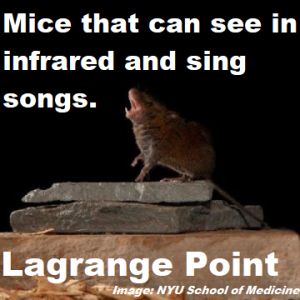
Monday Mar 04, 2019
Monday Mar 04, 2019
We preview 2019 March Mammal Madness, and find out about interesting animals from across the world. We look at ways to augment vision to help see in infra-red, and use singing mice to study human conversation. Plus we find out about balancing predators and prey.
References:
- March Mammal Madness
- Yuqian Ma, Jin Bao, Yuanwei Zhang, Zhanjun Li, Xiangyu Zhou, Changlin Wan, Ling Huang, Yang Zhao, Gang Han, Tian Xue. Mammalian Near-Infrared Image Vision through Injectable and Self-Powered Retinal Nanoantennae. Cell, 2019; DOI: 10.1016/j.cell.2019.01.038
- Matthew T. Farr, David S. Green, Kay E. Holekamp, Gary J. Roloff, Elise F. Zipkin. Multispecies hierarchical modeling reveals variable responses of African carnivores to management alternatives. Ecological Applications, 2019; 29 (2): e01845 DOI: 10.1002/eap.1845
- Daniel E. Okobi Jr., Arkarup Banerjee, Andrew M. M. Matheson, Steven M. Phelps, Michael A. Long. Motor cortical control of vocal interaction in neotropical singing mice. Science, 2019 DOI: 10.1126/science.aau9480
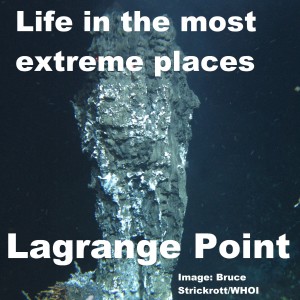
Monday Feb 18, 2019
Episode 314 - Ancient life and life in extreme places
Monday Feb 18, 2019
Monday Feb 18, 2019
From the bottom of the ocean, to the earliest days of the earth, life has managed to not just survive but thrive. We look at several cases which change our understanding of the earliest life on earth and just what that might mean for understanding life on this planet and beyond. From moving life fossilised in mud, to using isotopes to study metabolism and discovering whole new methods of getting food, life continues to astound researchers with its inventiveness.
References:
- Min Sub Sim, Hideaki Ogata, Wolfgang Lubitz, Jess F. Adkins, Alex L. Sessions, Victoria J. Orphan, Shawn E. McGlynn. Role of APS reductase in biogeochemical sulfur isotope fractionation. Nature Communications, 2019; 10 (1) DOI: 10.1038/s41467-018-07878-4
- Abderrazak El Albani, M. Gabriela Mangano, Luis A. Buatois, Stefan Bengtson, Armelle Riboulleau, Andrey Bekker, Kurt Konhauser, Timothy Lyons, Claire Rollion-Bard, Olabode Bankole, Stellina Gwenaelle Lekele Baghekema, Alain Meunier, Alain Trentesaux, Arnaud Mazurier, Jeremie Aubineau, Claude Laforest, Claude Fontaine, Philippe Recourt, Ernest Chi Fru, Roberto Macchiarelli, Jean Yves Reynaud, François Gauthier-Lafaye, Donald E. Canfield. Organism motility in an oxygenated shallow-marine environment 2.1 billion years ago. Proceedings of the National Academy of Sciences, 2019; 201815721 DOI: 10.1073/pnas.1815721116
- Stephanie A. Carr, Sean P. Jungbluth, Emiley A. Eloe-Fadrosh, Ramunas Stepanauskas, Tanja Woyke, Michael S. Rappé, Beth N. Orcutt. Carboxydotrophy potential of uncultivated Hydrothermarchaeota from the subseafloor crustal biosphere. The ISME Journal, 2019; DOI: 10.1038/s41396-019-0352-9

Monday Feb 11, 2019
Episode 313 - Cross continent pop hits from whales and deep divers
Monday Feb 11, 2019
Monday Feb 11, 2019
The greatest pop hits can cross continents, but what about oceans? We all know whales make songs, but not only are they very complex, they can be covered, repeated and spread like a Number 1 summer hit across oceans to the far flung corners of the globe. Plus reaching the deepest depths of the ocean is tough for humans, but easy for whales. How do they accomplish these great feats? We also touch on the impact of naval sonar on the battle between squids and whales.
Reference:
- Jeanne M. Shearer, Nicola J. Quick, William R. Cioffi, Robin W. Baird, Daniel L. Webster, Heather J. Foley, Zachary T. Swaim, Danielle M. Waples, Joel T. Bell, Andrew J. Read. Diving behaviour of Cuvier's beaked whales ( Ziphius cavirostris ) off Cape Hatteras, North Carolina. Royal Society Open Science, 2019; 6 (2): 181728 DOI: 10.1098/rsos.181728
- Melinda L. Rekdahl, Ellen C. Garland, Gabriella A. Carvajal, Carissa D. King, Tim Collins, Yvette Razafindrakoto, Howard Rosenbaum. Culturally transmitted song exchange between humpback whales (Megaptera novaeangliae) in the southeast Atlantic and southwest Indian Ocean basins. Royal Society Open Science, 2018; 5 (11): 172305 DOI: 10.1098/rsos.172305
- Brandon L. Southall, Kelly J. Benoit-Bird, Mark A. Moline, David Moretti. Quantifying deep-sea predator-prey dynamics: Implications of biological heterogeneity for beaked whale conservation. Journal of Applied Ecology, 2019; DOI: 10.1111/1365-2664.13334

Monday Feb 11, 2019
Episode 313 - Cross continent pop hits from whales and deep divers
Monday Feb 11, 2019
Monday Feb 11, 2019
The greatest pop hits can cross continents, but what about oceans? We all know whales make songs, but not only are they very complex, they can be covered, repeated and spread like a Number 1 summer hit across oceans to the far flung corners of the globe. Plus reaching the deepest depths of the ocean is tough for humans, but easy for whales. How do they accomplish these great feats? We also touch on the impact of naval sonar on the battle between squids and whales.
Reference:
- Jeanne M. Shearer, Nicola J. Quick, William R. Cioffi, Robin W. Baird, Daniel L. Webster, Heather J. Foley, Zachary T. Swaim, Danielle M. Waples, Joel T. Bell, Andrew J. Read. Diving behaviour of Cuvier's beaked whales ( Ziphius cavirostris ) off Cape Hatteras, North Carolina. Royal Society Open Science, 2019; 6 (2): 181728 DOI: 10.1098/rsos.181728
- Melinda L. Rekdahl, Ellen C. Garland, Gabriella A. Carvajal, Carissa D. King, Tim Collins, Yvette Razafindrakoto, Howard Rosenbaum. Culturally transmitted song exchange between humpback whales (Megaptera novaeangliae) in the southeast Atlantic and southwest Indian Ocean basins. Royal Society Open Science, 2018; 5 (11): 172305 DOI: 10.1098/rsos.172305
- Brandon L. Southall, Kelly J. Benoit-Bird, Mark A. Moline, David Moretti. Quantifying deep-sea predator-prey dynamics: Implications of biological heterogeneity for beaked whale conservation. Journal of Applied Ecology, 2019; DOI: 10.1111/1365-2664.13334

Monday Jan 21, 2019
Monday Jan 21, 2019
A brain injury like a stroke or a neuro degenerative condition like Huntingdon's or Parkinson’s disease can be a long and arduous ordeal. It can be difficult to diagnose and there are no clear treatments, but scientists are working hard to solve it. We find out about the important role Glial cells play in supporting neurons and how things can go wrong if they are disrupted. We also find out about ways to use the abundance of Glial cells to make new neurons. Plus we get a better understanding of cell death and repair and the roll proteins can play in slowing down those processes to give your brain time to recover.
- Mikhail Osipovitch, Andrea Asenjo Martinez, John N. Mariani, Adam Cornwell, Simrat Dhaliwal, Lisa Zou, Devin Chandler-Militello, Su Wang, Xiaojie Li, Sarah-Jehanne Benraiss, Robert Agate, Andrea Lampp, Abdellatif Benraiss, Martha S. Windrem, Steven A. Goldman. Human ESC-Derived Chimeric Mouse Models of Huntington’s Disease Reveal Cell-Intrinsic Defects in Glial Progenitor Cell Differentiation. Cell Stem Cell, 2018; DOI: 10.1016/j.stem.2018.11.010
- Walter and Eliza Hall Institute. (2018, December 20). Parkinson's disease protein buys time for cell repair. ScienceDaily. Retrieved January 5, 2019 from www.sciencedaily.com/releases/2018/12/181220080000.htm
- Penn State. (2018, November 5). New gene therapy reprograms brain glial cells into neurons. ScienceDaily. Retrieved January 5, 2019 from www.sciencedaily.com/releases/2018/11/181105122433.htm
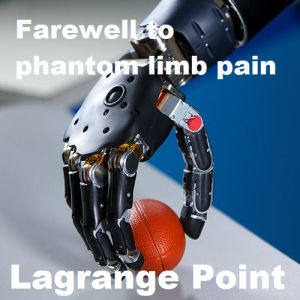
Monday Jan 07, 2019
Episode 308 - Farewell to phantom limb pain, and better prostheses
Monday Jan 07, 2019
Monday Jan 07, 2019
Having a traumatic injury, serious infection or cancer is bad enough let alone if you have to have an amputation. But once that amputation has occurred how do you make life easier for the amputee? Prostheses are helpful, but they can require retraining your brain and lack the sense of touch. Plus phantom limb pain can make life painful and frustrating. This week we find out about surgical and biomedical treatments to help improve prostheses and give amputees better quality of life.
References:
- Bowen, J. B., Ruter, D., Wee, C., West, J., & Valerio, I. L. (2019). Targeted Muscle Reinnervation Technique in Below-Knee Amputation. Plastic and Reconstructive Surgery, 143(1), 309-312. doi:10.1097/prs.0000000000005133
- Cheesborough, J., Smith, L., Kuiken, T., & Dumanian, G. (2015). Targeted Muscle Reinnervation and Advanced Prosthetic Arms. Seminars in Plastic Surgery, 29(01), 062-072. doi:10.1055/s-0035-1544166
- Nathanaël Jarrassé, Etienne de Montalivet, Florian Richer, Caroline Nicol, Amélie Touillet, Noël Martinet, Jean Paysant, Jozina B. de Graaf. Phantom-Mobility-Based Prosthesis Control in Transhumeral Amputees Without Surgical Reinnervation: A Preliminary Study. Frontiers in Bioengineering and Biotechnology, 2018; 6 DOI: 10.3389/fbioe.2018.00164
- Arizona State University. (2018, November 7). New prosthetic hand system allows user to 'feel' again: The Neural-Enabled Prosthetic Hand (NEPH) system marks first time bidirectional prosthesis can be used in home setting. ScienceDaily. Retrieved January 5, 2019 from www.sciencedaily.com/releases/2018/11/181107093757.htm

Monday Dec 31, 2018
Episode 307 - Ancient druidic treatments, wasp venom and peptide cages
Monday Dec 31, 2018
Monday Dec 31, 2018
The arms race against antibiotic resistant bacteria continues. As the world faces down this challenge, we turn to stranger and stranger places for treatment. So how can you turn ancient druidic treatments into modern new antibiotics? How do you make wasp venom actually a useful treatment? Can you trap bacteria inside a cage and just starve them to this? This week we find out about the fight back against bacteria.
References:
- Luciana Terra, Paul J. Dyson, Matthew D. Hitchings, Liam Thomas, Alyaa Abdelhameed, Ibrahim M. Banat, Salvatore A. Gazze, Dušica Vujaklija, Paul D. Facey, Lewis W. Francis, Gerry A. Quinn. A Novel Alkaliphilic Streptomyces Inhibits ESKAPE Pathogens. Frontiers in Microbiology, 2018; 9 DOI: 10.3389/fmicb.2018.02458
- Sina Krokowski, Damián Lobato-Márquez, Arnaud Chastanet, Pedro Matos Pereira, Dimitrios Angelis, Dieter Galea, Gerald Larrouy-Maumus, Ricardo Henriques, Elias T. Spiliotis, Rut Carballido-López, Serge Mostowy. Septins Recognize and Entrap Dividing Bacterial Cells for Delivery to Lysosomes. Cell Host & Microbe, 2018; 24 (6): 866 DOI: 10.1016/j.chom.2018.11.005
- Massachusetts Institute of Technology. (2018, December 7). Engineers repurpose wasp venom as an antibiotic drug. ScienceDaily. Retrieved December 29, 2018 from www.sciencedaily.com/releases/2018/12/181207112651.htm
Antibiotics from druidic recipes in the Irish countryside.
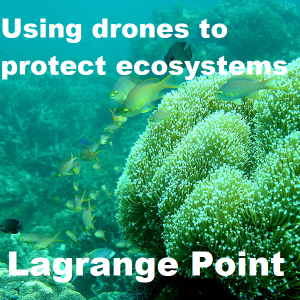
Monday Dec 24, 2018
Episode 306 - Drones as a force for good and evil
Monday Dec 24, 2018
Monday Dec 24, 2018
Drones being used for good, and drones being used for evil. We look at ways that drones can help biologists protect, treat, regrow marine damaged ecosystems. Including IVF transplants for the Great Barrier Reef, sea-grass disease hunting drones and even drones to detect camouflaged birds in forests. We also look into the science behind drone defense and how we can protect our critical infrastructure from rogue drones.
References:
- Hartley, A. (2018, November 27). This attempt to save the reef is the largest, most complicated coral regeneration project ever. Retrieved from https://www.abc.net.au/news/2018-11-27/reef-ivf-unprecedented-new-approach-could-save-dying-coral-reefs/10557718
- Hegranes, J. (2018, January 26). The Past, Present And Future Of Anti-Drone Tech. Retrieved from https://www.forbes.com/sites/forbestechcouncil/2018/01/26/the-past-present-and-future-of-anti-drone-tech/#845428852d62
- Minogue, K. (2018, September 17). Smithsonian Environmental Research Center. Retrieved from https://serc.si.edu/media/press-release/eelgrass-wasting-disease-has-new-enemies-drones-and-artificial-intelligence
- Vincent, J. (2015, December 11). Tokyo police unveil net-wielding interceptor drone. Retrieved from https://www.theverge.com/2015/12/11/9891128/tokyo-interceptor-net-drone
- Shewring, M. (2018, December 13). Drones can detect protected night jar nests (S. Weiss, Ed.). Retrieved from https://www.britishecologicalsociety.org/drones-nightjar-nests/
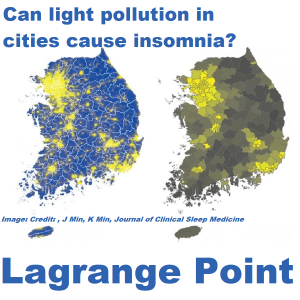
Monday Dec 03, 2018
Monday Dec 03, 2018
Life in the big city can be fully of late nights, lots of lights and risky behaviour. This week we look at what living in the big city may mean for your health. Whether it be the impact of light pollution and getting a good night's rest, to the trade-offs of being a night owl, our circadian rhythms can be impacted by living a 24/7 life. We find out about studies on big data about a cities health, from a long term study of insomniacs in South Korea to using social media to determine when a city is 'feeling lucky' and willing to take a risk.
References:
- Jin-young Min, Kyoung-bok Min. Outdoor Artificial Nighttime Light and Use of Hypnotic Medications in Older Adults: A Population-Based Cohort Study. Journal of Clinical Sleep Medicine, 2018; 14 (11): 1903 DOI: 10.5664/jcsm.7490
- Suzana Almoosawi Snieguole Vingeliene Frederic Gachon Trudy Voortman Luigi Palla Jonathan D Johnston Rob Martinus Van Dam Christian Darimont Leonidas G Karagounis. Chronotype: Implications for Epidemiologic Studies on Chrono-Nutrition and Cardiometabolic Health. Advances in Nutrition, 2018 DOI: 10.1093/advances/nmy070
- A. Ross Otto, Johannes C. Eichstaedt. Real-world unexpected outcomes predict city-level mood states and risk-taking behavior. PLOS ONE, 2018; 13 (11): e0206923 DOI: 10.1371/journal.pone.0206923
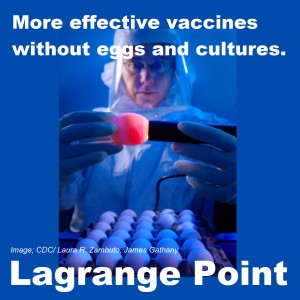
Monday Nov 19, 2018
Episode 301 - More effective Vaccines.
Monday Nov 19, 2018
Monday Nov 19, 2018
Using vaccines to tackle a pandemic is a serious challenge for health agencies. So how do we make vaccines more effective? Can we remove the requirement for a cold chain from lab to clinic? We also find out ways to boost the performance of a flu shot with a simple cream. Plus an update on a new vaccine types to prevent Ebola.
References:
- Jing Zou, Xuping Xie, Huanle Luo, Chao Shan, Antonio E. Muruato, Scott C. Weaver, Tian Wang, Pei-Yong Shi. A single-dose plasmid-launched live-attenuated Zika vaccine induces protective immunity. EBioMedicine, 2018; DOI: 10.1016/j.ebiom.2018.08.056
- Ami Patel et al. Protective Efficacy and Long-Term Immunogenicity in Cynomolgus Macaques by Ebola Virus Glycoprotein Synthetic DNA Vaccines. Journal of Infectious Diseases, 2018 DOI: 10.1093/infdis/jiy537
- NIH/National Institute of Allergy and Infectious Diseases. (2018, September 6). Clinical trial testing topical cream plus influenza vaccine in progress: Cream regimen could boost immunity. ScienceDaily. Retrieved October 13, 2018 from www.sciencedaily.com/releases/2018/09/180906101347.htm

Monday Oct 22, 2018
Monday Oct 22, 2018
Making new treatments often starts by finding out just what building blocks you have. But what if you could use the blocks with whole new sets? What if you could see how the blocks changed between owners? What about making your own brand new blocks? When fighting bacteria, we need every tool we can get. This week we find out about some great ways to take the fight back to bacteria in new and interesting ways from artificial cells, or new combinations of treatments, even to tracking the way bacteria changes over aeons.
References:
- Emily J. Richardson, Rodrigo Bacigalupe, Ewan M. Harrison, Lucy A. Weinert, Samantha Lycett, Manouk Vrieling, Kirsty Robb, Paul A. Hoskisson, Matthew T. G. Holden, Edward J. Feil, Gavin K. Paterson, Steven Y. C. Tong, Adebayo Shittu, Willem van Wamel, David M. Aanensen, Julian Parkhill, Sharon J. Peacock, Jukka Corander, Mark Holmes, J. Ross Fitzgerald. Gene exchange drives the ecological success of a multi-host bacterial pathogen. Nature Ecology & Evolution, 2018; 2 (9): 1468 DOI: 10.1038/s41559-018-0617-0
- Elif Tekin, Cynthia White, Tina Manzhu Kang, Nina Singh, Mauricio Cruz-Loya, Robert Damoiseaux, Van M. Savage, Pamela J. Yeh. Prevalence and patterns of higher-order drug interactions in Escherichia coli. npj Systems Biology and Applications, 2018; 4 (1) DOI: 10.1038/s41540-018-0069-9
- Yunfeng Ding, Luis E. Contreras-Llano, Eliza Morris, Michelle Mao, Cheemeng Tan. Minimizing Context Dependency of Gene Networks Using Artificial Cells. ACS Applied Materials & Interfaces, 2018; DOI: 10.1021/acsami.8b10029
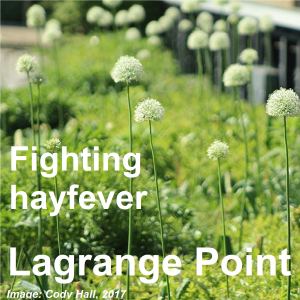
Monday Oct 15, 2018
Monday Oct 15, 2018
A change of seasons means you may be sniffling, sneezing and having teary eyes. So why do our bodies sometimes cause such an over the top response to pollen? We dive into the science behind hay fever, what histamine even does for you, and how it's helping you in more ways than you realise. Plus we find out what's being done to deliver a 1,2,3 blow to Traveller's Diarrhoea.
References:
- Alessandra Misto, Gustavo Provensi, Valentina Vozella, Maria Beatrice Passani, Daniele Piomelli. Mast Cell-Derived Histamine Regulates Liver Ketogenesis via Oleoylethanolamide Signaling. Cell Metabolism, 2018; DOI: 10.1016/j.cmet.2018.09.014
- Caroline B.K. Mathiesen, Michael C. Carlsson, Stephanie Brand, Svenning Rune Möller, Manja Idorn, Per thor Straten, Anders E. Pedersen, Sally Dabelsteen, Adnan Halim, Peter Adler Würtzen, Jens Brimnes, Henrik Ipsen, Bent L. Petersen, Hans H. Wandall. Genetically engineered cell factories produce glycoengineered vaccines that target antigen-presenting cells and reduce antigen-specific T-cell reactivity. Journal of Allergy and Clinical Immunology, 2018; DOI: 10.1016/j.jaci.2018.07.030
- Renee M. Laird, Zuchao Ma, Nelum Dorabawila, Brittany Pequegnat, Eman Omari, Yang Liu, Alexander C. Maue, Steven T. Poole, Milton Maciel, Kavyashree Satish, Christina L. Gariepy, Nina M. Schumack, Annette L. McVeigh, Frédéric Poly, Cheryl P. Ewing, Michael G. Prouty, Mario A. Monteiro, Stephen J. Savarino, Patricia Guerry. Evaluation of a conjugate vaccine platform against enterotoxigenic Escherichia coli (ETEC), Campylobacter jejuni and Shigella. Vaccine, 2018; DOI: 10.1016/j.vaccine.2018.09.052
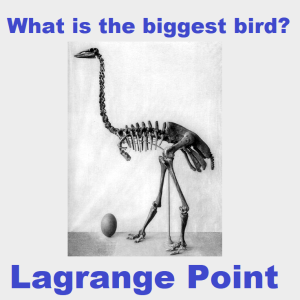
Monday Oct 01, 2018
Episode 294 - What is the biggest bird; Island Giants and dwarfs.
Monday Oct 01, 2018
Monday Oct 01, 2018
What is the biggest bird? Why do some species in some locations end up becoming giants? What makes islands like Madagascar so special and why are so many of the species once found there so very large in size? This week we look at island gigantism and island dwarfism across the world with a focus on the giant Elephant birds of Madagascar.
References:
- James P. Hansford, Samuel T. Turvey. Unexpected diversity within the extinct elephant birds (Aves: Aepyornithidae) and a new identity for the world's largest bird. Royal Society Open Science, 2018; 5 (9): 181295 DOI: 10.1098/rsos.181295
- James Hansford, Patricia C. Wright, Armand Rasoamiaramanana, Ventura R. Pérez, Laurie R. Godfrey, David Errickson, Tim Thompson, Samuel T. Turvey. Early Holocene human presence in Madagascar evidenced by exploitation of avian megafauna. Science Advances, 2018; 4 (9): eaat6925 DOI: 10.1126/sciadv.aat6925
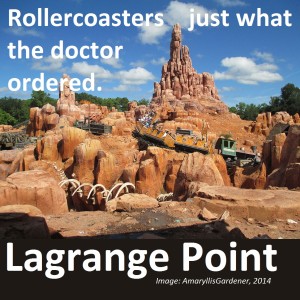
Monday Sep 17, 2018
Monday Sep 17, 2018
It's Ignobel Prize 2018 time. As part of Improbable Research's celebration of curious and comedic science, we find out the rollercoasters, and how they are just what the doctor ordered. The Ignobel Prize 2018 in Medicine went to Mitchel and Wartinger for their ground breaking work into how to use rollercoasters to treat Kidney stones. We look into how rollercoasters work, their impact on the body, and how it can help pass kidney stones. Plus we look at some research into how rollercoaster g-force can impact your brain.
References:
- Marc A. Mitchell, David D. Wartinger. Validation of a Functional Pyelocalyceal Renal Model for the Evaluation of Renal Calculi Passage While Riding a Roller Coaster. The Journal of the American Osteopathic Association, 2016; 116 (10): 647 DOI: 10.7556/jaoa.2016.128
- ROLLER COASTER PHYSICS & G FORCES - COASTERFORCE. (2018). Retrieved from http://coasterforce.com/physics/
- DeHart, Roy L. (2002). Fundamentals of Aerospace Medicine: 3rd Edition. Lippincott Williams & Wilkins.
- "NASA Physiological Acceleration Systems". Web.archive.org. 2008-05-20. Archived from the original on 2008-05-20. Retrieved 2012-12-25.
- NASA Technical note D-337, Centrifuge Study of Pilot Tolerance to Acceleration and the Effects of Acceleration on Pilot Performance, by Brent Y. Creer, Captain Harald A. Smedal, USN (MC), and Rodney C. Vtlfngrove, figure 10
- NASA Technical note D-337, Centrifuge Study of Pilot Tolerance to Acceleration and the Effects of Acceleration on Pilot Performance, by Brent Y. Creer, Captain Harald A. Smedal, USN (MC), and Rodney C. Vtlfngrove
- Kuo, Calvin & Wu, Lyndia & P Ye, Patrick & Laksari, Kaveh & Benjamin Camarillo, David & Kuhl, Ellen. (2017). Pilot Findings of Brain Displacements and Deformations During Roller Coaster Rides. Journal of neurotrauma. 34. 10.1089/neu.2016.4893.
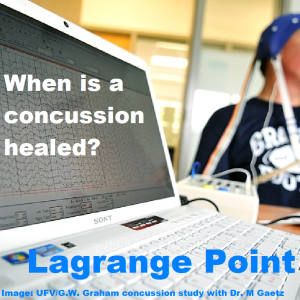
Monday Sep 10, 2018
Episode 291 - Concussion science, assessment frameworks and biomarkers
Monday Sep 10, 2018
Monday Sep 10, 2018
Concussions are a serious issue for everyone from the largest professional leagues to the weekend amateurs. The CDC has released some updated guidelines for assessing concussions and we dive into some new tests to help take the decision out of players hands and back it up with some sound evidence.
- Angela Lumba-Brown, David W. Wright, Kelly Sarmiento, Debra Houry. Emergency Department Implementation of the Centers for Disease Control and Prevention Pediatric Mild Traumatic Brain Injury Guideline Recommendations. Annals of Emergency Medicine, 2018; DOI: 10.1016/j.annemergmed.2018.03.045
- Johnson VE, Stewart W, Smith DH. Axonal pathology in traumatic brain injury. Experimental Neurology. 246: 35-43 (2013).
- Ling H, Hardy, J, Zetterberg H. Neurological consequences of traumatic brain injuries in sports. Molecular and Cellular Neuroscience. 66(B): 114-122 (2015).
- Alexander M. Weber, Anna Pukropski, Christian Kames, Michael Jarrett, Shiroy Dadachanji, Jack Taunton, David K. B. Li, Alexander Rauscher. Pathological Insights From Quantitative Susceptibility Mapping and Diffusion Tensor Imaging in Ice Hockey Players Pre and Post-concussion. Frontiers in Neurology, 2018; 9 DOI: 10.3389/fneur.2018.00575
- Pashtun Shahim, Yelverton Tegner, Niklas Marklund, Kaj Blennow, Henrik Zetterberg. Neurofilament light and tau as blood biomarkers for sports-related concussion. Neurology, 2018; 10.1212/WNL.0000000000005518 DOI: 10.1212/WNL.0000000000005518

Monday Aug 27, 2018
Monday Aug 27, 2018
How do you defend against invaders in a millenia long war? Well Koala DNA is currently using some ancient DNA weapons to fight back against a viral invader. We also find out about some unlikely alliances from different corals teaming up, to how bacteria manages to spread and colonize from place to place. All this and more this week on Lagrange Point.
References:
- Ulrike Löber, Matthew Hobbs, Anisha Dayaram, Kyriakos Tsangaras, Kiersten Jones, David E. Alquezar-Planas, Yasuko Ishida, Joanne Meers, Jens Mayer, Claudia Quedenau, Wei Chen, Rebecca N. Johnson, Peter Timms, Paul R. Young, Alfred L. Roca, Alex D. Greenwood. Degradation and remobilization of endogenous retroviruses by recombination during the earliest stages of a germ-line invasion. Proceedings of the National Academy of Sciences, 2018; 201807598 DOI: 10.1073/pnas.1807598115
- Inês S. Pais, Rita S. Valente, Marta Sporniak, Luis Teixeira. Drosophila melanogaster establishes a species-specific mutualistic interaction with stable gut-colonizing bacteria. PLOS Biology, 2018; 16 (7): e2005710 DOI: 10.1371/journal.pbio.2005710
- Luigi Musco, Tomás Vega Fernández, Erik Caroselli, John Murray Roberts, Fabio Badalamenti. Protocooperation among small polyps allows the coral Astroides calycularis to prey on large jellyfish. Ecology, 2018; DOI: 10.1002/ecy.2413

